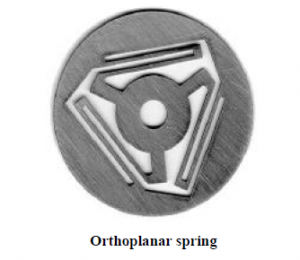Aaron Shelley and Dr. Larry Howell, Mechanical Engineering
This research focused on developing a new actuator/motor by integrating two previously unrelated technologies. In the past, piezoelectric crystals have been used primarily to measure acceleration in the engineering field, because of their unique nature of generating electricity when changes in their position occur. Modern researchers now use piezoelectric crystals in the opposite way, in that they put electricity through the crystals, causing them to expand or contract. The ability to cause the crystals to expand/contract merely by having a voltage difference across the crystal represents a whole new method of creating actuators/motors.
Researchers face a major problem in using piezoelectric crystals as actuators/motors. The deflection of the material is very small relative to the size of the material (about 0.1%). For example, a 1” piece of material would expand only 0.001″. Many applications would require a deflection of 1”, but that would require a 1000” (83.3 ft) piece of piezoelectric material, which is an obvious problem. This problem of limited crystal deflection was addressed using compliant mechanism technology to amplify the displacement of the piezoelectric materials.
Compliant mechanisms use the bending of a material to achieve a specific position. Thus, the combination of compliant mechanism technology and piezoelectric crystals has potential to surpass the deflection capabilities of actuators/motors that are currently available. Our research focused on integrating these two technologies.
The combination of the compliant mechanism and the piezoelectric technologies was accomplished by researching commercially available piezoelectric material and creating a mathematical model using an orthoplanar spring (pictured to the right), which was previously developed at BYU.
The research was to be conducted in the following steps:
1. Determine the specific properties of the piezoelectric material.
2. Choose a method of integrating the piezoelectric material into the orthoplanar design.
3. Determine manufacturability of material into the orthoplanar formation.
4. Create a mathematical model for stress and deflection.
5. Determine if there is a financial justification to make the device.
Results
1. The material used to make actuators/motors is usually extremely brittle, relatively expensive and very thin (about .020”).
2. Two methods were examined for integrating the orthoplanar spring and the piezoelectric material: first, cutting the entire orthoplanar spring shape out of a single piece of material; second, constructing the device out of six pieces of straight piezoelectric material and two pieces of aluminum.
3. Manufacturing the orthoplanar spring in one piece can only be done using a laser, which is an expensive process. However, the technology does not currently exist to create the right material properties within the piezoelectric crystals to make this one-piece design work. Manufacturing the device using the eight-piece design is both complex and expensive. The pieces would be extremely fragile and it would be difficult to maintain a circuit across the entire device.
4. A general mathematical model was created which would be applicable to both of the above-mentioned designs. The model predicts the stresses and the deflection for any configuration of the orthoplanar design.
5. To determine if time and money should be invested to manufacture this device a 5.5” diameter orthoplanar spring was run through the model. The model showed that the deflection would be approximately .044”. A cost estimate on the device showed a price of $2500 to $3000. The relatively small deflection (about 1%) as well as the high cost don’t seem to justify further research at this time.
The model that was created allowed us to determine the feasibility of using piezoelectric material with the orthoplanar design. If new technology could allow for the fabrication of the one-piece design, the price would be significantly reduced, creating a feasible product. This technology has the potential of making substantial contributions to many industries; however at this time there doesn’t seem to be practical or financial justification to manufacture the actuator/motor.

